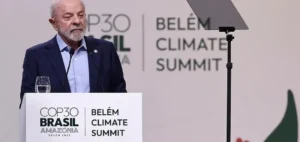The European Union and the United States reiterated their commitment to strengthen their cooperation in the energy sector, including joint decarbonization efforts and ensuring energy security while accelerating the green transition.
EU-US ministerial meeting: winter outlook and decarbonization discussed
At the EU-U.S. Energy Council ministerial meeting in Brussels, the co-chairs discussed the outlook for the coming winter, the situation in Ukraine and Moldova, and ways to accelerate decarbonization through clean energy technologies and energy conservation. They also exchanged views on their ongoing work to reduce methane emissions and to reduce dependence on Russia for nuclear fuel cycle materials and services.
In a joint statement, the two partners reaffirmed their commitment to maintaining stability in global energy markets and supporting the energy transition needed to meet the goals of the Paris Agreement. In addition, they witnessed the signing of a memorandum of understanding between TotalEnergies Anomaly Detection Initiatives and the Colorado State University Methane Emission Technology Assessment Center to develop a pathway to international standards for methane leak detection and quantification solutions.
The EU and the U.S. are strategic partners working together to promote ambitious climate action and net zero emissions, as well as to enhance energy security and promote energy diversification.
EU and U.S. join forces to ensure Europe’s energy security by exporting more LNG to the EU and reducing dependence on Russian hydrocarbons
In addition, the U.S. and the EU have committed to maintaining a high level of U.S. liquefied natural gas (LNG) deliveries to Europe in 2023, of at least 50 billion cubic meters, according to a joint statement. U.S. Secretary of State Antony Blinken announced that the U.S. exported 56 billion cubic meters of LNG to the EU in 2022, an increase of 140% over 2021, helping to reduce Europe’s dependence on Russian hydrocarbons.
The statement also confirmed that maintaining a high level of LNG deliveries is necessary to ensure that stocks are filled for the winter of 2023-2024, given the current challenging supply situation. Gas reserves in Europe are currently 56% full, with the aim of filling them to 90% by November.
Conversations between the U.S. and the EU were marked by relief that Russian President Vladimir Putin’s efforts to weaponize energy had failed. The EU has set a target of filling its gas reserves to 90% by November and is also reducing gas demand.
Gas consumption in the EU fell by 19% between August and January, well above the EU target of 15%. The EU and the United States are committed to working together to ensure Europe’s energy security, while accelerating the green transition and reducing greenhouse gas emissions.






















